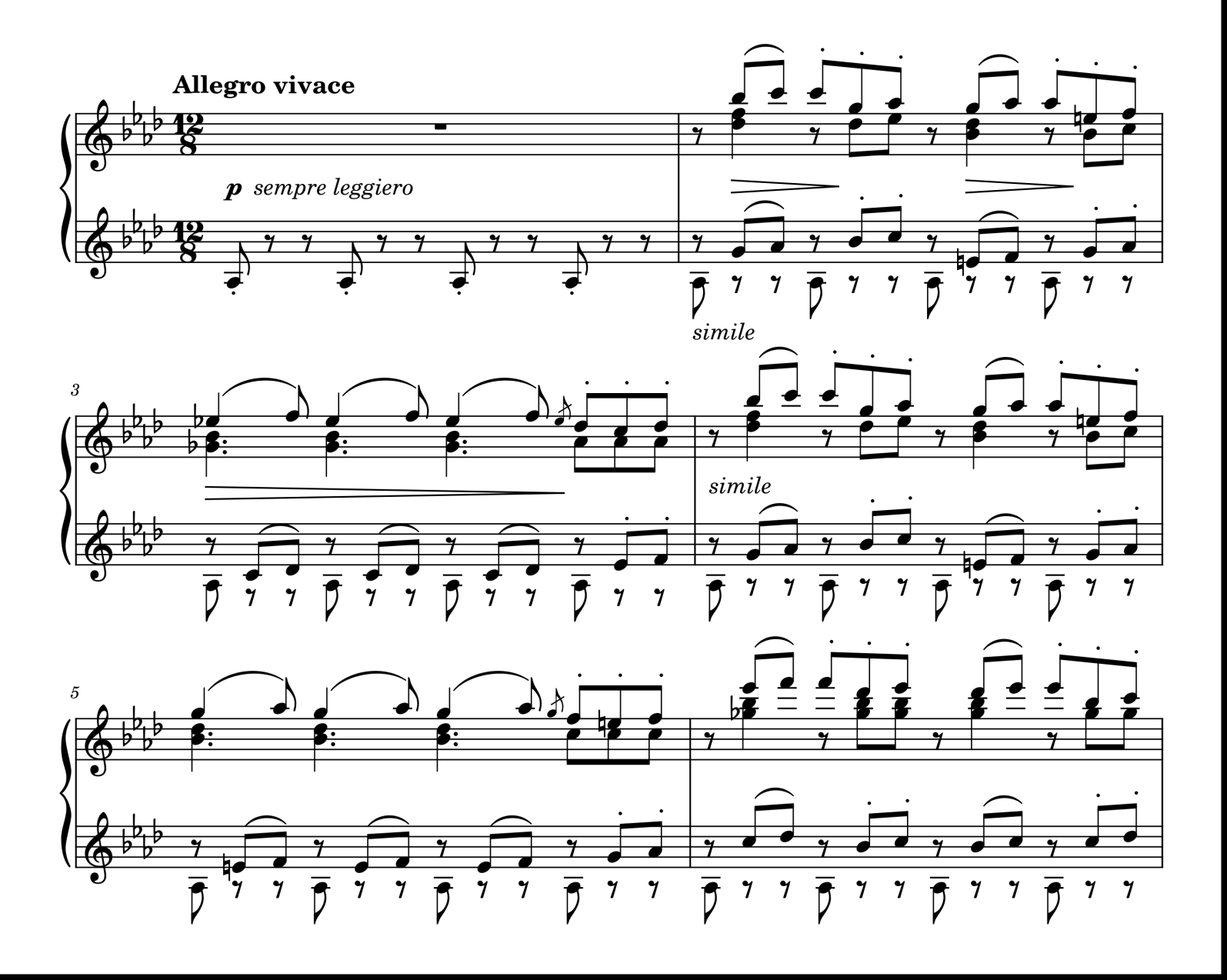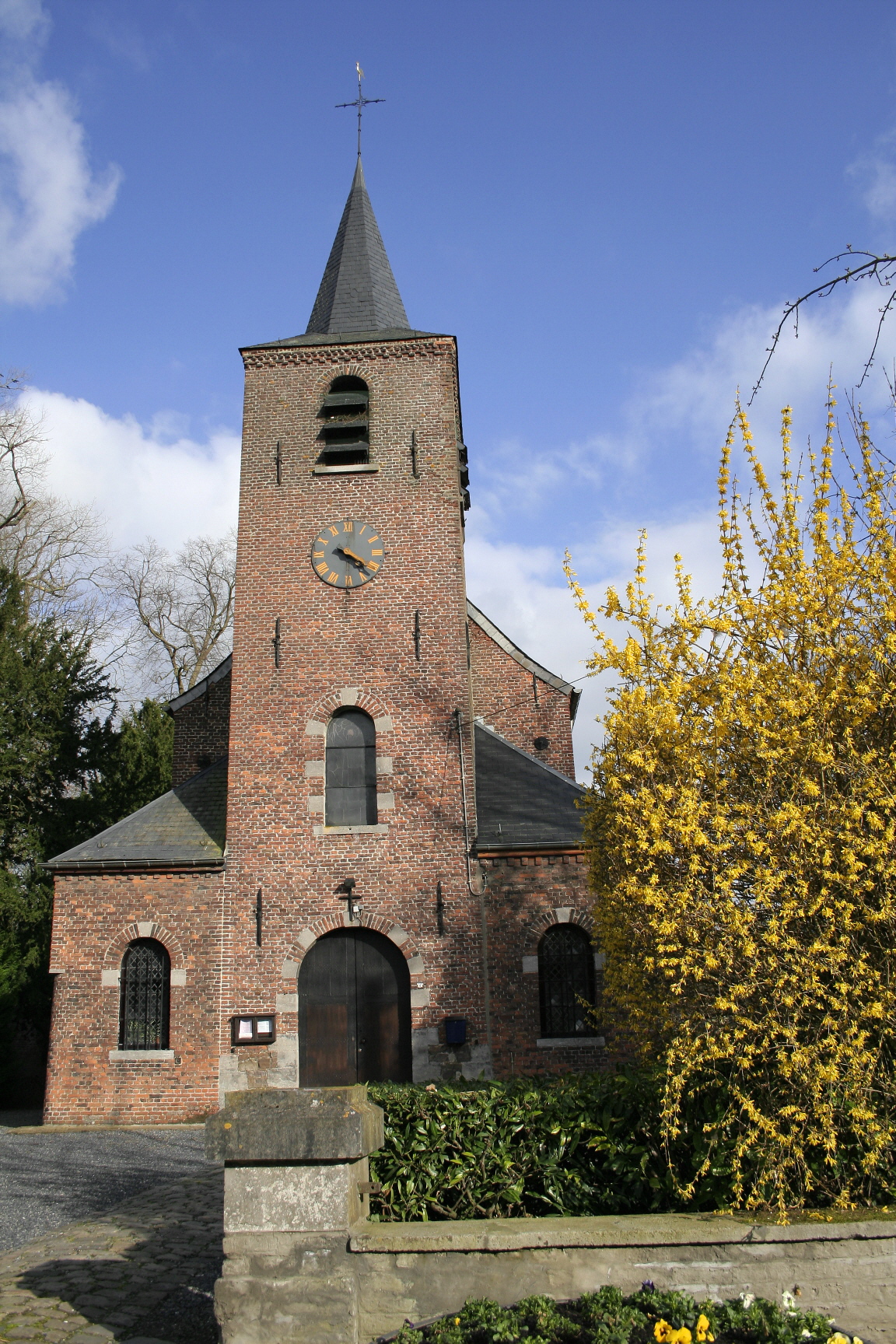|
Sound Patterns
''Sound Patterns'' (1961) is a musical piece for a cappella mixed chorus by Pauline Oliveros. Oliveros won the Gaudeamus International Composers Award in 1962 with this work. Rather than a traditional text, the work is constructed of phonetic sounds chosen on the basis of their timbre. The piece is entirely notated, lasts about four minutes, and features an exposition (measures 1–12), development (12–46), and recapitulation (47–59). The sounds may be understood to reflect Oliveros' interest in electronic music, which she had recently begun to work with. Heidi Van Gunden (1983) illustrates this point by highlighting four types of sounds that correspond to basic electronic music techniques: #white noise # ring-modulated sounds #percussive envelopes #filtered techniques White noise is created vocally through the initial consonant "sh" and variations such as s, z, wh, p, t, h, ct, d, ch, th, k, and sw. Ring modulation is imitated through rapidly changing the vowel content, p ... [...More Info...] [...Related Items...] OR: [Wikipedia] [Google] [Baidu] |
Musical Composition
Musical composition can refer to an Originality, original piece or work of music, either Human voice, vocal or Musical instrument, instrumental, the musical form, structure of a musical piece or to the process of creating or writing a new piece of music. People who create new compositions are called composers. Composers of primarily songs are usually called songwriters; with songs, the person who writes lyrics for a song is the lyricist. In many cultures, including Western classical music, the act of composing typically includes the creation of music notation, such as a sheet music, sheet music "score," which is then performed by the composer or by other musicians. In popular music and Folk music, traditional music, songwriting may involve the creation of a basic outline of the song, called the lead sheet, which sets out the melody, lyrics and chord progression. In classical music, orchestration (choosing the instruments of a large music ensemble such as an orchestra which will ... [...More Info...] [...Related Items...] OR: [Wikipedia] [Google] [Baidu] |
Audio Filter
An audio filter is a frequency dependent circuit, working in the audio frequency range, 0 Hz to 20 kHz. Audio filters can amplify (boost), pass or attenuate (cut) some frequency ranges. Many types of filters exist for different audio applications including hi-fi stereo systems, musical synthesizers, effects units, sound reinforcement systems, instrument amplifiers and virtual reality systems. Types ;Low-pass :Low-pass filters pass through frequencies below their cutoff frequencies, and progressively attenuates frequencies above the cutoff frequency. Low-pass filters are used in audio crossovers to remove high-frequency content from signals being sent to a low-frequency subwoofer system. ;High-pass :A high-pass filter does the opposite, passing high frequencies above the cutoff frequency, and progressively attenuating frequencies below the cutoff frequency. A high-pass filter can be used in an audio crossover to remove low-frequency content from a signal being sen ... [...More Info...] [...Related Items...] OR: [Wikipedia] [Google] [Baidu] |
1961 Compositions
Events January * January 3 ** United States President Dwight D. Eisenhower announces that the United States has severed diplomatic and consular relations with Cuba (Cuba–United States relations are restored in 2015). ** Aero Flight 311 (Koivulahti air disaster): Douglas DC-3C OH-LCC of Finnish airline Aero crashes near Kvevlax (Koivulahti), on approach to Vaasa Airport in Finland, killing all 25 on board, due to pilot error: an investigation finds that the captain and first officer were both exhausted for lack of sleep, and had consumed excessive amounts of alcohol at the time of the crash. It remains the deadliest air disaster to occur in the country. * January 5 ** Italian sculptor Alfredo Fioravanti marches into the U.S. Consulate in Rome, and confesses that he was part of the team that forged the Etruscan terracotta warriors in the Metropolitan Museum of Art. ** After the 1960 military coup, General Cemal Gürsel forms the new government of Turkey (25th government) ... [...More Info...] [...Related Items...] OR: [Wikipedia] [Google] [Baidu] |
Compositions By Pauline Oliveros
Composition or Compositions may refer to: Arts and literature * Composition (dance), practice and teaching of choreography *Composition (language), in literature and rhetoric, producing a work in spoken tradition and written discourse, to include visuals and digital space *Composition (music), an original piece of music and its creation *Composition (visual arts), the plan, placement or arrangement of the elements of art in a work * ''Composition'' (Peeters), a 1921 painting by Jozef Peeters *Composition studies, the professional field of writing instruction * ''Compositions'' (album), an album by Anita Baker *Digital compositing, the practice of digitally piecing together a video Computer science *Function composition (computer science), an act or mechanism to combine simple functions to build more complicated ones *Object composition, combining simpler data types into more complex data types, or function calls into calling functions History *Composition of 1867, Austro-Hungarian ... [...More Info...] [...Related Items...] OR: [Wikipedia] [Google] [Baidu] |
Erhard Karkoschka
Erhard Karkoschka (March 6, 1923 – June 26, 2009), was a German composer, scholar and conductor. Karkoschka was born in the German linguistic enclave of Moravská Ostrava, Czechoslovakia, and subsequent to World War II became a violinist for the Bayreuth Symphony Orchestra, leading to studies in composition, musicology and conducting at the Musikhochschule in Stuttgart and the University of Tübingen, Germany. His doctoral thesis was an analysis of the compositional techniques in the early works of Anton Webern. From 1948 until 1968, he directed the choir and orchestra at the University of Hohenheim, the former Agricultural College, and the "Hohenheimer Schloßkonzerte". In 1958, he taught at the State University of Music and Performing Arts in Stuttgart (Staatlichen Hochschule für Musik und Darstellende Kunst Stuttgart). :de:Staatliche Hochschule für Musik und Darstellende Kunst Stuttgart Then in 1962, he founded his Ensemble for New Musik, which eventually broke away from ... [...More Info...] [...Related Items...] OR: [Wikipedia] [Google] [Baidu] |
Nouvelles Aventures
Nouvelles ( wa, Novele) is a town of Wallonia and a district of the municipality of Mons, located in the province of Hainaut, Belgium. It was a municipality until the fusion of the Belgian municipalities The fusion of the Belgian municipalities (French: ''fusion des communes'', Dutch: ''fusie van Belgische gemeenten'') was a Belgian political process that rationalized and reduced the number of municipalities in Belgium between 1975 and 1983. In ... in 1977. Sub-municipalities of Mons Former municipalities of Hainaut (province) {{Hainaut-geo-stub ... [...More Info...] [...Related Items...] OR: [Wikipedia] [Google] [Baidu] |
Momente
''Momente'' (Moments) is a work by the German composer Karlheinz Stockhausen, written between 1962 and 1969, scored for solo soprano, four mixed choirs, and thirteen instrumentalists (four trumpets, four trombones, three percussionists, and two electric keyboards). A " cantata with radiophonic and theatrical overtones", it is described by the composer as "practically an opera of Mother Earth surrounded by her chicks". It was Stockhausen's first piece composed on principles of modular transposability, and his first musical form to be determined from categories of sensation or perception rather than by numerical units of musical terminology, which marks a significant change in the composer's musical approach from the abstract forms of the 1950s. History Stockhausen began work on ''Momente'' in January 1962, with a performance planned for the following May. He had been invited by Baron Francesco Agnello to withdraw for the period of composition of the work to his palazzo in Siculi ... [...More Info...] [...Related Items...] OR: [Wikipedia] [Google] [Baidu] |
Karlheinz Stockhausen
Karlheinz Stockhausen (; 22 August 1928 – 5 December 2007) was a German composer, widely acknowledged by critics as one of the most important but also controversial composers of the 20th and early 21st centuries. He is known for his groundbreaking work in electronic music, for introducing controlled chance ( aleatory techniques) into serial composition, and for musical spatialization. He was educated at the Hochschule für Musik Köln and the University of Cologne, later studying with Olivier Messiaen in Paris and with Werner Meyer-Eppler at the University of Bonn. One of the leading figures of the Darmstadt School, his compositions and theories were and remain widely influential, not only on composers of art music, but also on jazz and popular music. His works, composed over a period of nearly sixty years, eschew traditional forms. In addition to electronic music—both with and without live performers—they range from miniatures for musical boxes through works for sol ... [...More Info...] [...Related Items...] OR: [Wikipedia] [Google] [Baidu] |
György Ligeti
György Sándor Ligeti (; ; 28 May 1923 – 12 June 2006) was a Hungarian-Austrian composer of contemporary classical music. He has been described as "one of the most important avant-garde composers in the latter half of the twentieth century" and "one of the most innovative and influential among progressive figures of his time". Born in Transylvania, Romania, he lived in the Hungarian People's Republic before emigrating to Austria in 1956. He became an Austrian citizen in 1968. In 1973 he became professor of composition at the Hamburg Hochschule für Musik und Theater, where he worked until retiring in 1989. He died in Vienna in 2006. Restricted in his musical style by the authorities of Communist Hungary, only when he reached the West in 1956 could Ligeti fully realise his passion for avant-garde music and develop new compositional techniques. After experimenting with electronic music in Cologne, Germany, his breakthrough came with orchestral works such as '' Atmosphères'' ... [...More Info...] [...Related Items...] OR: [Wikipedia] [Google] [Baidu] |
Improvisation
Improvisation is the activity of making or doing something not planned beforehand, using whatever can be found. Improvisation in the performing arts is a very spontaneous performance without specific or scripted preparation. The skills of improvisation can apply to many different faculties, across all artistic, scientific, physical, cognitive, academic, and non-academic disciplines; see Applied improvisation. Improvisation also exists outside the arts. Improvisation in engineering is to solve a problem with the tools and materials immediately at hand. Improvised weapons are often used by guerrillas, insurgents and criminals. Engineering Improvisation in engineering is to solve a problem with the tools and materials immediately at hand. Examples of such improvisation was the re-engineering of carbon dioxide scrubbers with the materials on hand during the Apollo 13 space mission, or the use of a knife in place of a screwdriver to turn a screw. Engineering improvisations may ... [...More Info...] [...Related Items...] OR: [Wikipedia] [Google] [Baidu] |
Mute (music)
A mute is a device attached to a musical instrument which changes the instrument's tone quality (timbre) or lowers its volume. Mutes are commonly used on string and brass instruments, especially the trumpet and trombone, and are occasionally used on woodwinds. Their effect is mostly intended for artistic use, but they can also allow players to practice discreetly. Muting can also be done by hand, as in the case of palm muting a guitar or grasping a triangle to dampen its sound. Mutes on brass instruments are typically inserted into the flared end of the instrument (bell). They can also be held in front of or clipped onto the bell. Of brass mutes, the "straight mute" is the most common and is frequently used in classical and jazz music, but a wide variety are available. On string instruments of the violin family, mutes are usually attached to the bridge, the piece of wood that supports the strings. Palm muting a guitar involves placing the side of the hand across the strings, ... [...More Info...] [...Related Items...] OR: [Wikipedia] [Google] [Baidu] |






.jpg)

